DeGaulle and the Formidable
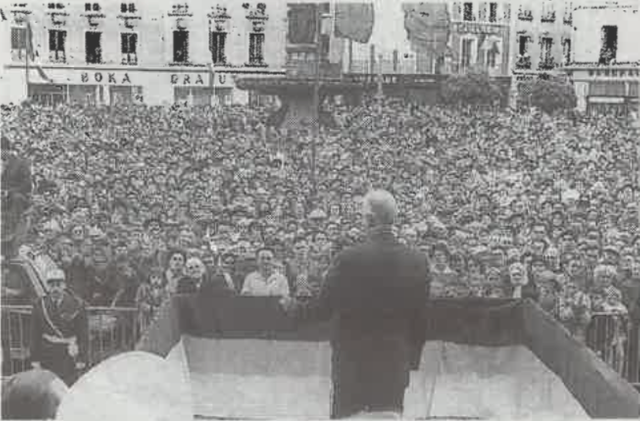
MARCH 29, 1967
The formidable monster weighing 8,000 tons and 128 meters long, glides softly in the waters of the port of Cherbourg. General de Gaulle, re-elected president in 1965, had just pushed a green button. On that day, France joined the very exclusive club of naval nuclear powers. The event is of national significance. “I address my congratulations to the shipyard of Cherbourg that has developed this submarine which is essential for our navy,” assured De Gaulle. “And in this way, for our defense. And in this way, for our independence, long live France!” The children of the shipyard workers had the right to be present to see the General, who had come with two ministers in office at the time, Pierre Messmer and Alain Peyrefitte.
In full uniform, general de Gaulle traveled standing up in his presidential Chambord limousine from Maupertus airport to the shipyard. His arrival was saluted by 101 cannon shots from the battery of the Homet fort. At the stroke of noon, the president of the Republic dined at the maritime prefecture with fifty guests. On the menu that day: young ladies of Cherbourg in full view, Porte Maillot braised veal fillet, mimosa lettuce salad, and frozen vacherin cake.
Apples for Giscard
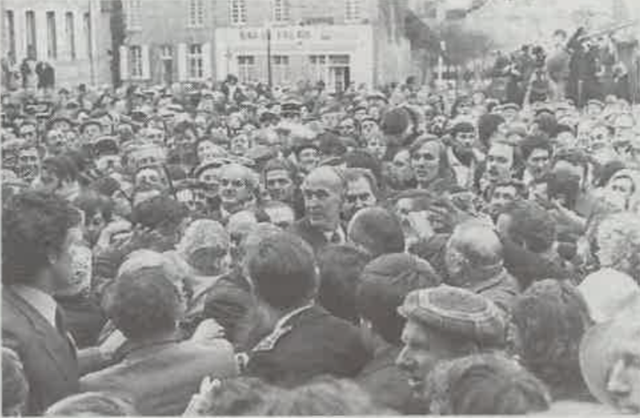
DECEMBER 5, 1980
Place du Château in Valognes, Valéry Giscard d’Estaing stoically listened to La Marseillaise. The moment was solemn, but the president’s ears were ringing. A barrage of insults and hostile slogans followed each step. VGE, elected in 1974, was there to award the second Alexis-de-Tocqueville prize to American sociologist David Riesman. A thousand demonstrators, who for the most part came from Cherbourg, were able to enter the town and infiltrate the crowd in small groups. Finally, they were able to get very close to the President despite the presence of seven squads of mobile policemen and two companies of riot police. The banners stayed at the entrance to Valognes. Some threw rotten apples at him until the security forces, completely overwhelmed, regained control after the ceremony in the covered market. The situation calmed down, bit by bit.
After having been honored for being an “incurable liberal”, Giscard announced several pieces of good news for the region (RN 13, aid to farmers). A few days later, the head of the National Channel Police station was punished.
Mitterrand and the 35 hours
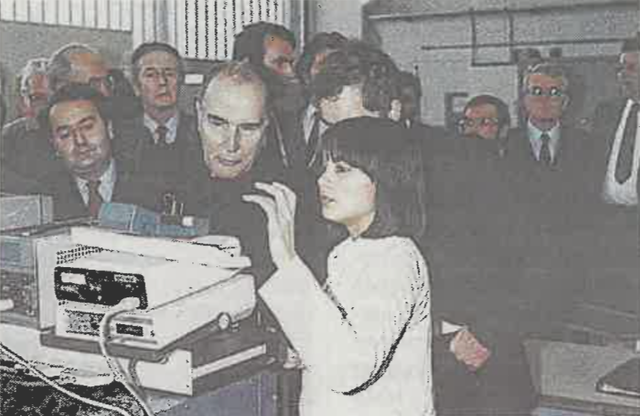
DECEMBER 6, 1982
That Thursday morning, everything was normal at CIT-Alcatel at Querqueville. Then, suddenly, a surprise. The workers learned that the president of the Republic, François MItterrand, would be arriving at the company at any moment. He who was nicknamed “Uncle” wanted to make a political coup by expressing his support of CIT- Alcatel which had gone to 35 working hours a month and a half before. “The evidence is clear that we can combine industrial performance and social progress,” François Mitterrand assured that day, even while the country was undergoing an austerity cure.
It was very late the evening before when the authorities were notified of the imminence of the trip. The visit was quick, just an hour. After having taken the tour of three workshops and meeting with the unions, he had a discussion with two workers. Until that point, François Mitterrand, in blue gabardine, was happy to listen. With one of them, he recalled his training in the company. Later, the young woman admitted she would have liked to discuss her salary with him, which she considered too low. But in the end, she didn’t dare.
Hollande dreams of hydrogen
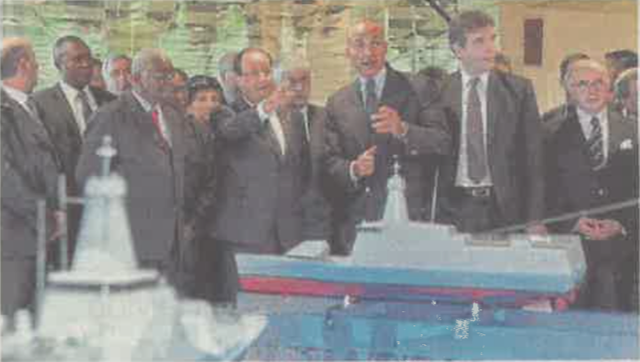
DECEMBER 6, 1982
That Monday, François Hollande and the president of Mozambique, Armando Guebuza, assisted at the cutting of the first sheet of one of the thirty ships commanded by the African nation. A sacred recognition, therefore, for the Constructions Mechaniques de Normandie shipyards. “This has a considerable impact on the workload of this company whose history I am familiar with, but it is also important for its image: other countries may be interested in the CMN, a high quality tool,” insisted François Hollande.
A few minutes later, at the Cité de la Mer, the City of the Sea, in the presence of industrialists and energy engineers, the president of the Republic had indeed launched the development of the hydrogen industry in Cherbourg.
In detailing the call for bids for pilot farms, he insisted: “It is the future of the industry that in part is playing out here. We have to focus on excellence.” To structure such an industry, the President also explained that he wanted to offer “visibility” to the different parties in this renewable marine energy field.
Chirac: the drama in Karachi
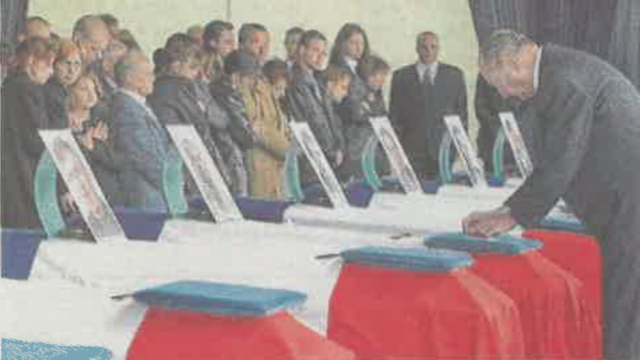
MAY 13, 2002
On May 8, in Pakistan, a vehicle exploded when a bus passed by carrying French personnel working on the assembly of submarines in the local shipyard. Cherbourg paid a heavy toll that day, with eight dead and twelve injured. So on the morning of that Monday, May 13, the entire city paid a magnificent homage to its own, shaken by the pain of the families.
Under an official tent installed on the green beach, Jacques Chirac, newly re- elected president, was there. Before a crowd of more than 10,000 people, the head of State advanced in his long black coat and with his jaw set. “France is in mourning,” whispered Jacques Chirac. “Cherbourg is murdered. Spouses, children, parents, friends weep today for their dear ones. I offer them my deep solidarity.” On that day, the president promised that the perpetrators of that monstrous crime would be punished. Before turning toward the coffins to pay a last homage, “In the name of the French Republic, we make you knights of the Legion of Honor,” declared the head of State as he passed in front of each body.
Sarkozy discovers the EPR Reactor
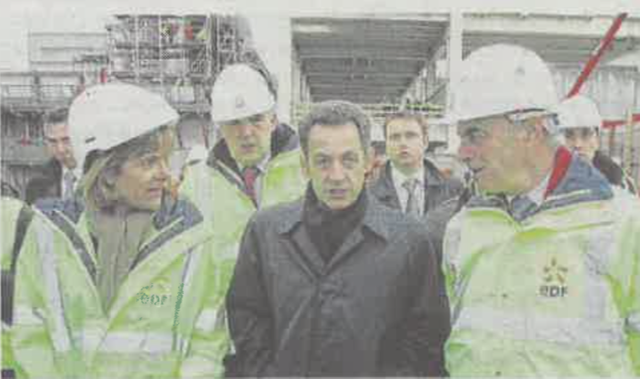
FEBRUARY 6, 2009
Nicolas Sarkozy was defiantly expected at the Channel. His previous coming, a month earlier at Saint-Lô for the return to school, had turned into an unmitigated disaster. Some incidents broke out between the police and demonstrators, and the head of State was booed. After that visit, the prefect Jean Charbonniaud and the director of Public Security (DDSP), Philippe Bourgade, were transferred. No risk this time. Thirty or so people, antinuclear militants or local Green Party officials, were held a kilometer away from the EPR reactor site.
Before an audience of EDF (Electricité de France) workers, the head of work and operations of Areva, the designer of the reactor, and of Bouygues, which poured the concrete, Nicolas Sarkozy justified his decision to build a second EPR reactor at Penly, highly criticized by ecologists, and confirmed that he even envisioned the construction of a third one. In total, president Sarkozy remained at the Flamanville power plant for just over an hour and a half to unveil what he would call “the model site for the renaissance of nuclear.”